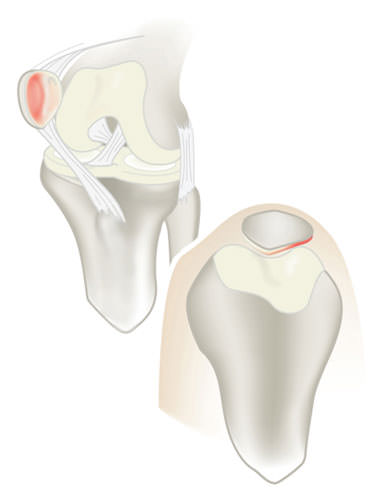
What is a runner’s knee?
Runner’s knee, also known as patellofemoral pain syndrome, is a condition characterized by dull pain around the front of the knee (patella) where it connects with the lower end of the thigh bone (femur). As the name suggests, runner’s knee is a common ailment among runners. However, it can also affect anyone who participates in activities that require a lot of knee bending, such as walking, biking, and jumping. “Runner’s knee” is a loose term for several disorders that cause pain around the front of the knee
What causes runner’s knee?
A number of factors can contribute to runner’s knee, including:
- Overuse from excessive training or repeated bending of the knee
- Injury
- Misalignment of the kneecap
- Flat feet, which may cause the arches of your feet to collapse
- Tightness, imbalance, or weakness of thigh muscles
What are the symptoms of runner’s knee?
The most common symptoms of runner’s knee include:
- Swelling
- Popping or grinding sensations in the knee
- Tender feeling when touching the kneecap
- Pain in and around the kneecap after activity or when bending the knee
How is runner’s knee diagnosed?
To diagnose runner’s knee, your doctor will give you a thorough physical exam and ask questions about where and when the pain appears. The diagnosis may be confirmed by x-rays or an MRI (magnetic resonance imaging).
How is runner’s knee treated?
Minor to moderate cases of runner’s knee should heal on their own given time. There are steps you can take to speed healing, including:
- Resting your knee
- Icing your knee for 20-30 minutes every 3-4 hours
- Compressing your knee with elastic bandages, straps, or sleeves
- Elevating your knee
- Taking anti-inflammatory painkillers, such as Advil, Aleve, or Motrin
- Performing stretching and strengthening exercises
- Getting arch supports (orthotics) to help with flat feet
- Getting physical therapy
Surgery may be needed in severe cases of runner’s knee. A surgeon can remove damaged cartilage or correct the position of the kneecap so that stress will be distributed evenly.
Are there things I can do to prevent runner’s knee?
Yes, you can prevent runner’s knee by staying in good shape (less weight means less stress on your knees), stretching well before exercising, increasing training gradually, using proper running gear, and making sure your running form is proper.
